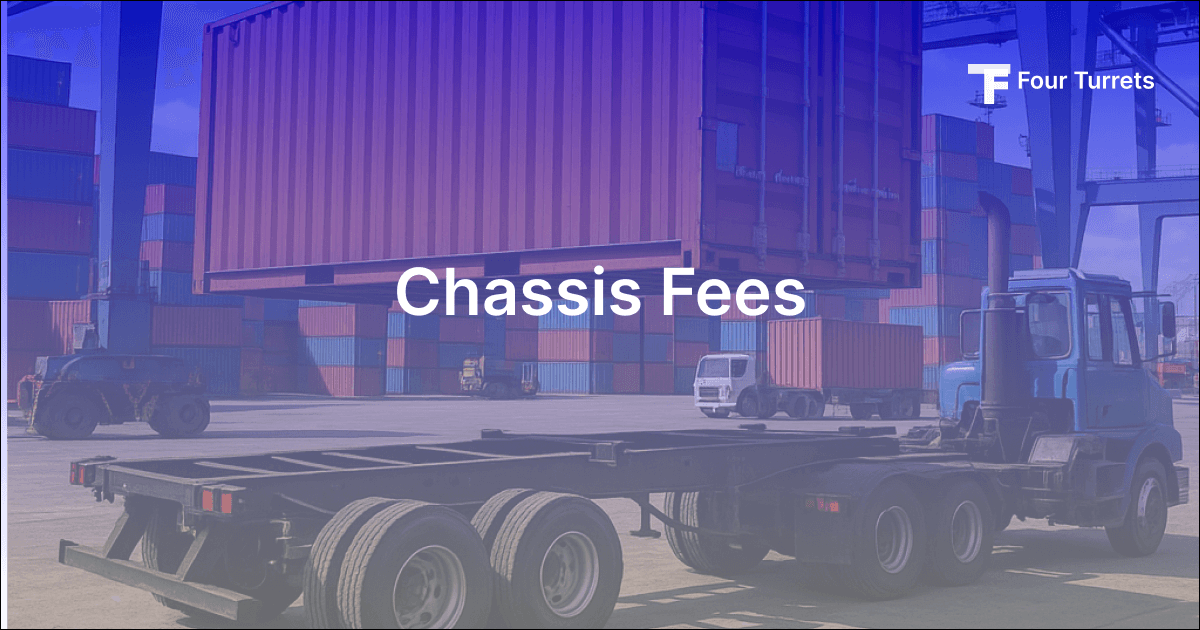What is a Chassis Fee?
A chassis fee is a charge applied when a container is transported by truck using a chassis—a specialized trailer designed to carry shipping containers. This fee typically arises after your cargo arrives at a port and needs to be moved by road to a warehouse or another destination. The chassis fee covers the cost of using this essential equipment during the inland leg of container shipping.
Why is a Chassis Needed?
A chassis is a wheeled frame or trailer that allows containers to be efficiently moved overland by truck. Without a chassis, containers cannot be transported from ports to their final destinations. Chassis are crucial for both FCL (Full Container Load) and LCL (Less than Container Load) shipments, though the fee structure may differ depending on the shipment type.
How is the Chassis Fee Calculated?
- FCL Shipments: Usually a flat fee, varying by trucker and location.
- LCL Shipments: Often calculated based on the volume of cargo.
- Tri-Axle Chassis Fee: For overweight containers, a tri-axle chassis may be required, incurring an additional fee .
What is a Chassis Split Fee?
A chassis split fee occurs when the container and its required chassis are located at different places. For example, if a chassis is not available at the port or rail ramp where the container is, the trucker must retrieve a chassis from a separate chassis pool, incurring extra time and cost. This fee typically ranges from $50 to $110 and is charged to cover the additional logistics effort.
Common Causes of Chassis Split Fees
- Chassis shortages at ports or ramps
- High demand during peak shipping seasons
- Logistical challenges requiring truckers to source chassis from different locations
Tip: To avoid chassis split fees, consider working with carriers who own their chassis fleet or collaborate with a reliable third-party logistics provider.
Chassis Pools and Types of Chassis
- Chassis Pool: A shared resource where truckers can rent chassis as needed. Chassis pools help manage equipment shortages but can sometimes lead to split fees if the chassis is not co-located with the container.
- Types of Chassis: Standard, tri-axle (for heavy loads), and specialized chassis for oversized or unique cargo.
Chassis Usage Fee vs. Chassis Fee
The terms chassis fee and chassis usage fee are often used interchangeably. Both refer to the cost of using a chassis for container transport, though some carriers may differentiate based on the duration or specific usage scenario.
Importance of Chassis Fees in Drayage and Container Shipping
Chassis fees are a key component of drayage—the short-distance transport of containers between ports, rail ramps, and warehouses. Understanding these fees helps shippers and forwarders budget accurately and avoid unexpected costs in container shipping.
Conclusion
Understanding the chassis fee and related charges like the chassis split fee is essential for anyone involved in container shipping and freight forwarding. By planning ahead and working with experienced partners, you can minimize these costs and ensure smooth cargo movement from port to final destination.
Who Pays the Chassis Fee?
The chassis fee is usually paid by the party responsible for arranging the inland transport—often the shipper, consignee, or their appointed freight forwarder. In some cases, the fee is passed through as a standard charge and is not negotiable.
Who Helps Clear Cargo from the Port?
A freight forwarder or a licensed customs broker typically assists in clearing cargo from the port. They handle documentation, customs clearance, and coordinate with truckers for the timely movement of containers using a chassis.



